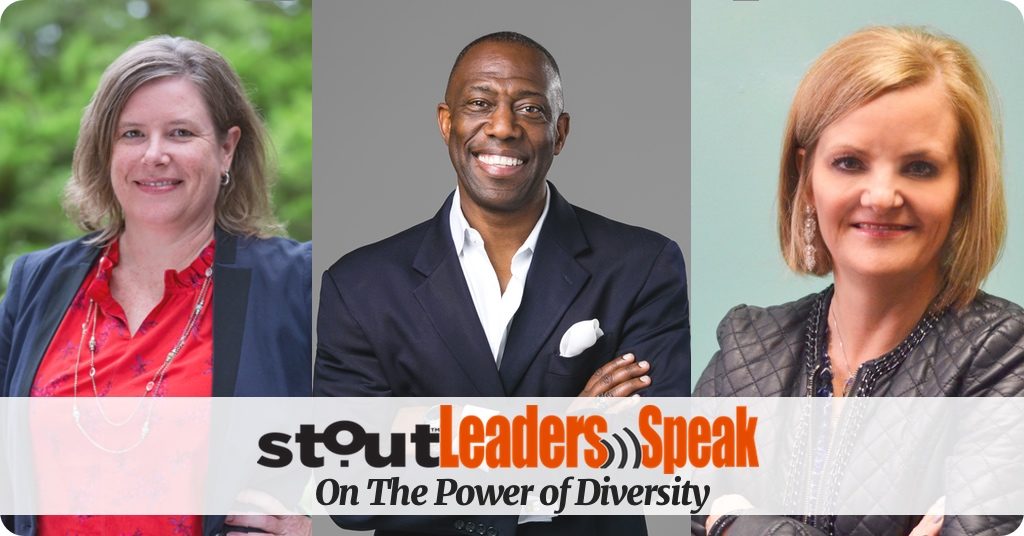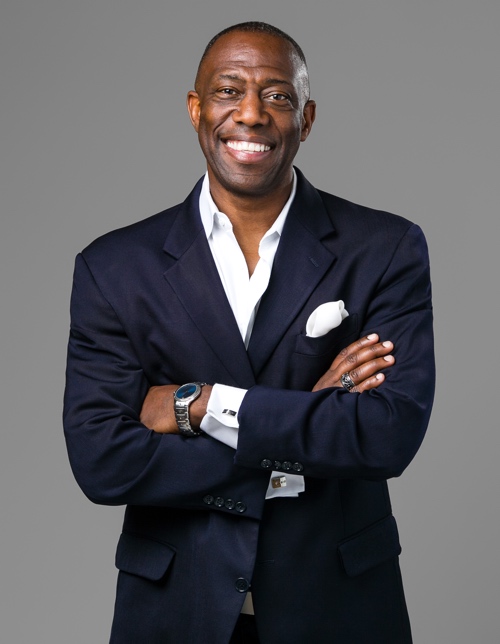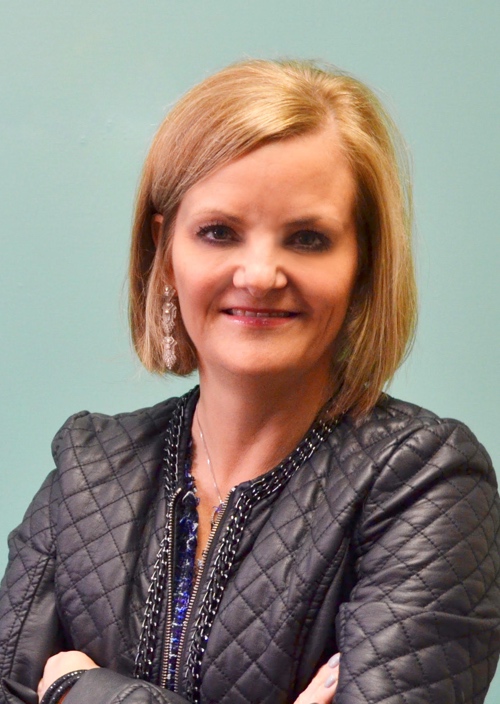
Leaders Speak: Executives Share Thoughts On The Power of Diversity

Stout words from today’s thought leaders
How are today’s thought leaders looking at diversity?
Get a look inside as Stout asks the questions you want to know on promoting diversity, inclusion and the importance of bringing everyone together at the table.

Nicole Wayman, Technical Program Manager at Applied Materials
Nicole Wayman, Technical Program Manager at Applied Materials
Diversity means everyone has a voice. We all want to be valued and find our place.
What does diversity mean/look like to you?
You are at the table and you are valued. There are many ways to solve problems and hearing everyone’s voice always gives us the best ideas.
What do you see as the challenges in this area?
We have five generations, glass ceilings, good ole boys clubs and under-representation everywhere. We need to ensure as we are blazing our trails, we are aware of things around you. There is a misconception that inclusion (inviting everyone to the table) will stifle your speed and agility. We need to look past the cliche and collaborate.
What is your strategy for making diversity happen?
Simple. Listen, Learn, Respect; Listen to those around you, everyone; Learn by sharing your passion and engaging others – take time to understand others; Be aware of biases. We all have them – especially confirmation bias. If we start putting people in buckets (color, gender, generation), we start to subscribe to the fallacies of those generalizations. Yet, when you reduce the noise (skin color, style, language) human nature hasn’t changed. We all want to be valued and find our place.
Who do you look to for guidance in this area?
Bill Proudman, White Men as Full Diversity Partners, put me on my diversity journey
Many co-worker that walk the walk. My kids. They don’t see differences like I do (46 YO white female)

Preston L. James II, Co-founder & CEO of DivInc
Preston L. James II, Co-founder & CEO of DivInc
A major challenge is that as a people we have a lack of IN-DEPTH understanding about the real barriers and disparities that exist.
What does diversity mean/look like to you?
Diversity means harmoniously respecting, appreciating and leveraging different perspectives, views, and people despite differences in how one one may look, dress, talk, think and/or where they grew up, went to school, etc. The bigger topic I believe is equity and inclusiveness-we must talk about removing barriers to authentic inclusiveness and creating real opportunity a broader set of our populations.
What do you see as the challenges in this area?
Diversity, Equity and Inclusion (DEI) is undoubtedly complex in our society. I believe many existing DEI initiatives are treating the symptoms and not the virus/disease that create the lack of DEI. The root issue is that as a people we have a lack of IN-DEPTH understanding about the real barriers and disparities that exist for groups of people due to the color of their skin, their gender, their disabilities, their native language, their economic status, etc.
A major challenge therefore is finding a way to push past this lack of understanding; to set aside fear, biases or a desire to cling to our rather violent, fearful and oppressive history and really appreciate the sacrifices, losses and situations that all of our ancestors faced in order to recognize that, for many, the situation is not as greatly changed as it should be and that we can surmount what divides us and create a better culture.
Another challenge is a lack of genuine commitment. If leaders are disingenuous or treat DEI as a “problem” that will “go away” with some money thrown at it for training, events and programs it just leads to a culture of distrust. No real relationship/culture can be sustained without a high level of trust from both sides of the relationship.
What is your strategy for making diversity happen?
It’s about creating cultural environments that are genuine and authentic in the inclusion of a diverse group of people. Transparency, candidness, respect and empathy are essential to building a trusting environment. In such a culture, people will be confident and empowered to be their authentic themselves, thus enabling all people to be the best of themselves. At DivInc, we are very intentional in our efforts to create this type of culture and blessed that we have fostered such a strong culture of community and inclusiveness. It’s such a beautiful thing to witness everyday, at work and in a social environment. We don’t claim to be perfect and we have more work to do, but I’m here to say that it can be done.
It is VERY IMPORTANT that people understand that “being authentically inclusive” is not just what you do at work, but it’s how you live your life. It is what you teach your children, it’s how you treat others away from work and how you talk about people when you are around your “own”. If a person can’t do that, it’s just fake and people will see through you eventually!
What is your challenge to others in this area?
You must care and force yourself (your organization, your company) to gain a much deeper understanding of the real barriers and disparities that exist for others and work to solve them. We must be willing to go 2-3 layers deeper in our understanding than our current levels. That can be really uncomfortable. We must be empathic in this journey. My challenge to others is to really get out of your own little world for a bit and bring people together to have ongoing open-minded, frank, candid, difficult, sometimes funny and oftentimes very painful conversations from different perspectives. The more we do this the more aware we become of our biases, the more comfortable and respectful we become with each other.
Reach beyond your typical networks and tell yourself you are going to find a person or organization or neighborhood that will provide you with deeper insights to the real barriers and disparities that exist. Through this type of engagement, we can develop a shared understanding about where barriers, inequities, disparities exist. With this shared understanding, we can figure out the why, and then TOGETHER with our new perspectives, we can solve problems, remove barriers and really improve our culture socially, economically and politically. The conversations are great to have, but it is imperative that we follow that up by working together to effect change.
Who do you look to for guidance in this area?
It’s an everybody’s challenge or at least everybody who really cares about Diversity, Equity and Inclusiveness. I do look to the community leadership, corporate leadership, academia and the government. However, the true leadership comes from the people in the community who choose to just do and make a difference. ! I also believe that it is a collaborative effort at some level across all of these entities to effect real change.

Melinda Garvey, CEO and Founder On The Dot Woman
Melinda Garvey, CEO and Founder On The Dot Woman
If you have to SEE it to BE it, we must make sure we have access to relatable role models.
What is your strategy for making diversity happen?
Access to relatable role models. Every day.
What do you see as the challenges in diversity?
Since I am so steeped in the women’s empowerment space, I really keep my focus there. What I see as the biggest challenge for women, is our lack of focus on the positive—or the abundance of success that is out there for women. The media tends to focus on the negative–#metoo, glass ceiling, inequality of pay, lack of access to funding—all valid and relevant, but I believe that even if we fixed all of these issues for women, we will still be behind because we have not surrounded ourselves with the role models we need to see the path to success for ourselves.
What is your challenge to others?
We have to make a choice, as women, to seek out and access positive and affirming content, mentors, role models and education to push ourselves to the next level.
